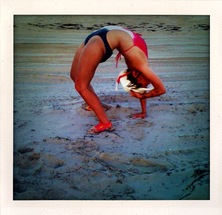|
As physical therapists who try to stay up with the latest research in our field, we feel it's important the general public is more aware and understanding of their bodies and how it works.
Below is a part of Richmond Stance's article on Specialist Pain Physio and are 5 common myths of low back pain: 1. Bending is dangerous 2. Discs slip 3. Nerves are trapped 4. Low back pain is in isolation to everything else in your life. Comments: 1. Bending is normal. Sure it can hurt when the back is being protected, and when we have back pain the muscles are guarding and this can reduce the amount of movement. In the acute phase, most positions and movements hurt, but this is protection and it is meant to be unpleasant in order to motivate action. Moving little and often, changing position and breathing all help to keep blood and oxygen flowing. 2. Discs are not actually discs and they do not go anywhere. Yes they can be injured like any other tissue. They can bulge and affect the local environment, and they can herniate, triggering a healing response — both can hurt because protection is initiated. The fact that there are so many nerve endings around the area mean that sensitivity can arise in a vigorous manner. Again, this is a normal if highly unpleasant experience. Remember that a 1/3 of the population have such changes in their spine but without any pain. The body as a whole must rate the situation as threatening for it to hurt. 3. Nerves do not get trapped. Local swelling and inflammation can sensitize the nerves meaning that they send danger signals. There is not too much room either, so if there is swelling or a bulge, this can affect blood flow to the nerve itself and cause sensitivity to movement and local chemical changes. Again, this can happen without pain as well, so it is down to the individual’s body systems and how they respond. Understanding, gradually moving and breathing can all help ease you through this phase. 4. Low back pain is embedded within your lifestyle. It is not separate to how you live — e.g. lack of exercise, postures, work, stress, emotional state, previous experiences, understanding of back pain, gender, genetics, just to name a few. This maybe more complex, but this provides many avenues for overcoming pain. We wish you a happy weekend! Dominick
0 Comments
Leave a Reply. |
AuthorThe therapists at SRVPT have a variety of backgrounds and are interested in sharing our knowledge with you! Check out their bios for more specific information. Archives
April 2024
Categories
All
|
|
San Ramon Valley Physical Therapy proudly serves the Alamo, Danville, San Ramon, Dublin, Pleasanton areas, along the 680 corridor.
© COPYRIGHT 2023 ALL RIGHTS RESERVED |


 RSS Feed
RSS Feed
